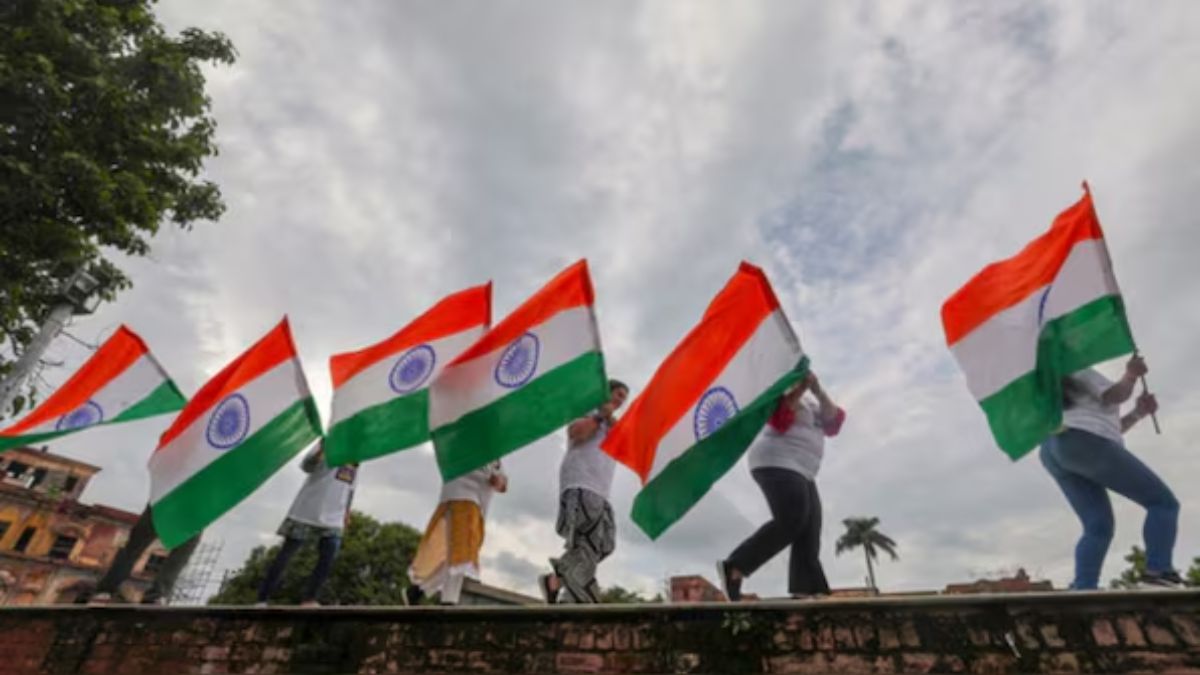The Indian national flag is a sign of the country’s freedom from British rule. Fluttering high, especially on government buildings, the Tricolour invokes feelings of pride and nationalism in the hearts of Indians. But did you know that it was adopted just weeks before independence? The Constituent Assembly adopted the tricolour as the national flag of independent India on July 22, 1947.
If you are a history geek who loves to learn about important events from the past, Firstpost Explainers’ ongoing series, History Today , will be your one-stop destination to explore key events.
On this day in 2011, Norway experienced one of the deadliest attacks in its modern history when Anders Behring Breivik carried out a two-part assault that claimed 77 lives.
Here is all that happened on this day.
India adopted Tricolour as its national flag
The Constituent Assembly of India officially adopted the Tricolour as the national flag of independent India on July 22, 1947, just weeks before gaining independence. This decision marked a defining step in India’s journey to sovereignty.
The flag, initially designed by Pingali Venkayya in 1921, had evolved through several alterations over the years as various designs were proposed and used by different factions of the Indian independence movement. The initial design featured red and green bands (symbolising Hindus and Muslims respectively) with the spinning wheel in the centre.
On Gandhi’s suggestion, a white stripe was later added to represent all other communities and peace. This ‘Swaraj Flag’ or ‘Gandhi Flag’ gained unofficial acceptance and was used during various Indian National Congress sessions.
However, the need for a flag that represented all of India without any communal interpretations became paramount as independence approached. An ad-hoc committee, headed by Dr Rajendra Prasad , was tasked with finalising the design. On July 22, 1947, Jawaharlal Nehru moved the resolution in the Constituent Assembly that cemented the design.
This flag consisted of saffron (symbolising courage and sacrifice) at the top, white (representing peace, truth and purity in the middle) and dark green (showing fertility and prosperity) at the bottom. The Ashoka Chakra in the middle, derived from the Sarnath Lion Capital of Emperor Ashoka, symbolises continuous progress.
The adoption of the flag was more than a symbolic gesture; it was a proclamation of identity. As Jawaharlal Nehru said in his speech during the flag’s adoption, “This flag is not only of freedom for ourselves, but a symbol of freedom to all people.”
Deadliest shooting incident in Norway
Norway experienced its deadliest attack since World War II, carried out by far-right extremist Anders Behring Breivik on this day in 2011. The two-part attack claimed the lives of 77 people and injured hundreds more.
The first attack took place at approximately 3:25 pm, when Breivik detonated a powerful car bomb in the government quarter in central Oslo. The blast, placed near the office of then-Prime Minister Jens Stoltenberg, killed eight people and caused significant damage to government buildings, shattering windows and creating widespread chaos. Many public offices were less occupied than usual due to the summer holiday, which likely prevented an even higher casualty count.
Roughly an hour and a half later, Breivik arrived at the island of Utoya disguised as a police officer. The island was hosting the annual summer camp of the Workers’ Youth League (AUF), the youth wing of Norway’s ruling Labour Party. For over an hour, armed with an automatic rifle and a pistol, Breivik systematically hunted down and shot the hundreds of mostly teenage attendees. He lured some victims closer by pretending to be a rescuer, resulting in a horrifying massacre that killed 69 people, many of whom were shot repeatedly or drowned trying to escape into the cold water.
Breivik was arrested on the island without resistance. During his trial in 2012, he showed no remorse and described his actions as “cruel but necessary” to fight what he believed was the Islamisation of Europe and the Labour Party’s role in promoting multiculturalism. He was found sane and guilty and sentenced to 21 years in prison, the maximum under Norwegian law, with the possibility of extension.
This Day, That Year
On this day in 1992, Colombian drug trafficker Pablo Escobar escaped from police custody.
American aviator Wiley Post completed the first solo flight around the world on this day in 1933.
In 1812, the duke of Wellington defeated ‘40,000 Frenchmen in 40 minutes’ at Salamanca, Spain.


)

)
)
)
)
)
)
)
)



